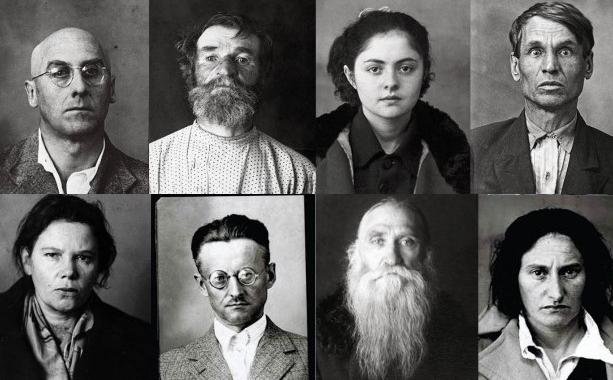Memorial Day for victims of political repression was established as a mournful date in 1991, shortly before the Soviet Union ceased to exist as a single state.
October 30 was the day when everyone who ended their days at the Kolyma sawmills, in the firing cellars of the NKVD, GPU, Cheka, MGB and other punitive institutions serving the communist regime is commemorated.
Why 1937?
Part of the truth about what happened to the convicts under article 58, Soviet citizens learned in 1956, having read the materials of the XX Congress. Intentions to cast doubt on the cornerstone of the socialist state system of the First Secretary of the CPSU N.S. Khrushchev was not, he believed in the inevitability of the victory of communism. A bold attempt was made to inspire the working people with the thought of the random nature of millions of tragedies.
Several episodes of feature films devoted to the memory of victims of political repressions , which, as a rule, all ended more or less successfully, and the figure “1937” was firmly entrenched in the mind as a symbol of lawlessness and arbitrariness. Why did you choose this particular year? After all, the number of those arrested and executed in previous and subsequent periods was not less, and sometimes even more.
The reason is simple. In 1937, the leadership of the CPSU (b) took up the purge of the ranks of its own party. The role of “enemies of the people” was tried on by those who, most recently, themselves were engaged in determining the degree of loyalty of a particular citizen, deciding his future fate. Such a collapse of life is remembered for a long time.
Victims or executioners?
In establishing Memorial Day for victims of political repressions, many deputies of the Supreme Council, adhering to communist convictions, again tried to convince the general public, and sometimes themselves, that socialism with some special, “human” face is possible. “Bright images” of such communist Leninists as Tukhachevsky, Uborevich, Blucher, Zinoviev, Bukharin, Rykov or Kamenev were cited as examples. The calculation was uncomplicated, despite universal secondary education and the availability of training at universities, citizens of the country of the Soviets formally studied the works of the classics of Marxism-Leninism, on the principle of “memorized, passed, forgot”.

It was assumed that on Memorial Day for victims of political repressions, people would remember the executed members of the Leninist political bureau, executioners Kronstadt and Tambov, theorists of the proletarian dictatorship and other representatives of the Bolshevik elite who were rehabilitated in the late fifties or in the Gorbachev years.
The memory of the color of the people
The truth, however, is that incontrovertible fact that the purge of the ranks of the CPSU (b) was a logical continuation of the party’s general line of suppressing any dissent in every way. Since 1917, a deliberate extermination of the color of Russian society has been carried out. The mass executions of peasants, clergy, professors, engineers, military, representatives of creative professions for twenty years were considered a historically natural process, they occurred to the applause and joyful hooting of Bukharin, Radek, Zinoviev and the like "faithful Leninists" until they themselves did not fall under the Stalinist ax.
On the Day of Remembrance of the Victims of Political Repressions, one can recall those who opposed totalitarianism in the post-Stalin years, and there were many of them. The beginning of the sixties was marked by several large-scale popular uprisings that broke out in Novocherkassk (1962), Krasnodar (1961), Odessa (1960) and other cities. Shootings of demonstrations, classified trials of "organizers", execution sentences were the result.
The Solovetsky stone on Lubyanka became the place where former prisoners, their descendants and all who remember the truth or want to know lay flowers on the Day of Remembrance of the victims of repression. Such, unfortunately, is becoming less and less.